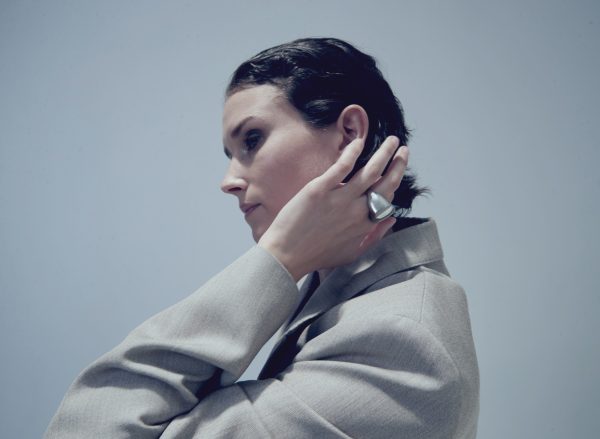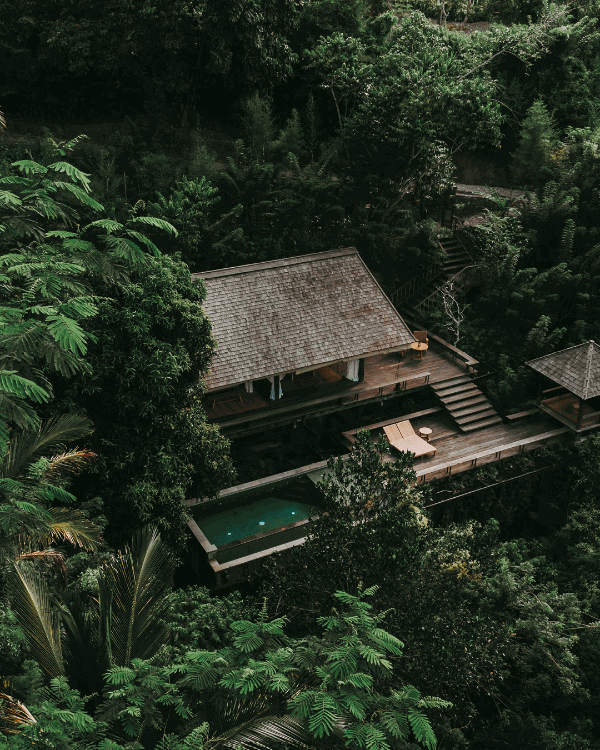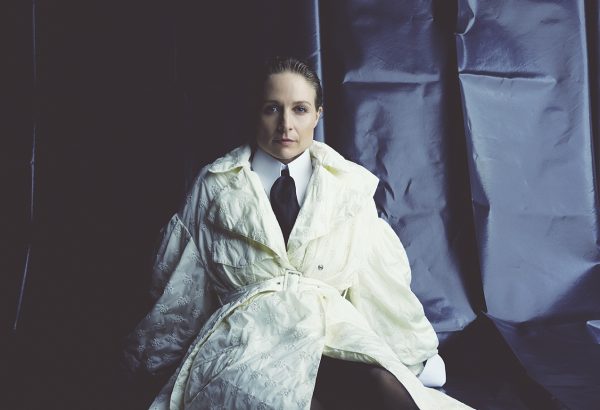
Photography / PortugalFashion / Ugo Camera
A spaceship fleet appears to have landed in a building with stripped walls. Hooded figures stand amidst geometrical and mirrored surfaces. This could well be the plot of a sci-fi movie. But it is not. It’s just the scenario for the exhibition showcasing the work of Felipe Oliveira Baptista, designer of his own eponymous line and the current creative director of Lacoste. Schön! Magazine caught up with him after his fashion show in Oporto’s Portugal Fashion, just in time for the opening of the exhibition.
You have just opened an exhibition on your work in Lisbon, and one of the first elements we can see are hooded overcoats. Are they reminiscent of the Azores where you were born?
The theme is protection, a recurring theme in my work – the idea of outerwear, of clothing as carapace. It was also a way of establishing a parallel with the overcoats I had used, only in terms of image and iconography for some of my works. The ideas of the hood and protection have been there since my very first collections. All the looks shown here come from different collections. There are always Portuguese references in my work, but they are unconscious, they are always there. For this exhibition it was interesting to put a focus on my roots that are always present somehow in my work.
Your clothes are aesthetically closely linked to comic strips, to rock, to a mix of references. Do these influences come mainly from Paris?
Fashion is a mirror of what matters in society, what society is nowadays. In all the places I have been, there have always been things that have touched me. I left Portugal twenty years ago, I studied in England, lived in Italy and I have been in Paris for fifteen years now. I have been to many places and I have a true puzzle of events and references.
What did England leave you with?
A big sense of creative freedom. London has still a great connection to pop culture; what’s new and young is still highly regarded and welcome. This is highly stimulating and innovative.
How did you start working with the big names in fashion?
I was lucky. I entered a competition with Max Mara when I was in Kingston University and I was offered a first job when I finished my fashion course, which meant I did not have to go through the internship stage, and later I worked for different companies.
How did you come to working in haute-couture?
It was an organic process, somehow. I created my brand in 2002, started working on it in 2003, and started showing haute-couture in 2005. I participated in the International Festival of Fashion and Photography in Hyères and I got a scholarship from the group Abermas which opened the doors to haute-couture.
How do you go about creating an international brand like yours?
Step by step. We were lucky to start selling right from the start, which is important, essential. After the Hyères Festival three or four articles appeared in the press. We were featured in WWD, which is the bible of American buyers, two days before we opened the showroom. And Colette, one of the biggest trendsetters in the market, was in the Jury of the Hyères festival and she gave us a storefront window during the Paris Fashion Week. When someone looks at your work, others then follow.
What is the difference between the winter collection and the new 2014 Spring/Summer Collection?
Both this fashion show and the exhibition follow a theme. There are many recurring themes, like work garments, for example. The exhibition and the new collection (Sheltering Sky) focus pretty much on that. Every time we come back to a certain theme, which we have to revisit from another angle. This collection focuses on uniforms and functionality and on military outfits but with new silhouettes, new proportions. This is perhaps a more quiet collection, less graphic, resting more on form and cut.
The way you quote hip hop and new-punk in your collections is quite pop. Your choice of music for your shows seems to be crucial…
Indeed. I have been working with a sound designer since 2005. His name is Michel Gaubert, one of the big names in sound design for fashion shows. Music is as important as the room, the hair, the make-up. The levels of energy music can convey to a show is always important.
You have joined Lacoste as creative director. How much Felipe is in these collections?
Everything I do for Lacoste is at the service of the brand. Lacoste has also that side of functional clothing, but I think these are bridges that are made naturally, and Lacoste has such a strong heritage that it provides a good angle on design and allows you to anticipate what the end result of your work might be. It is great to work with this brand’s DNA.
The exhibition runs from now until mid-February 2014 at MUDE in Lisbon.
Words/ Carlos Tomé Sousa
Click the below links to view the newest Schön! Magazine
Download Schön! the eBook
Schön! on the Apple Newsstand
Schön! on Google Play
Schön! on other Tablet & Mobile device
Read Schön! online
Subscribe to Schön! for a year
Collect Schön! limited editions































































































